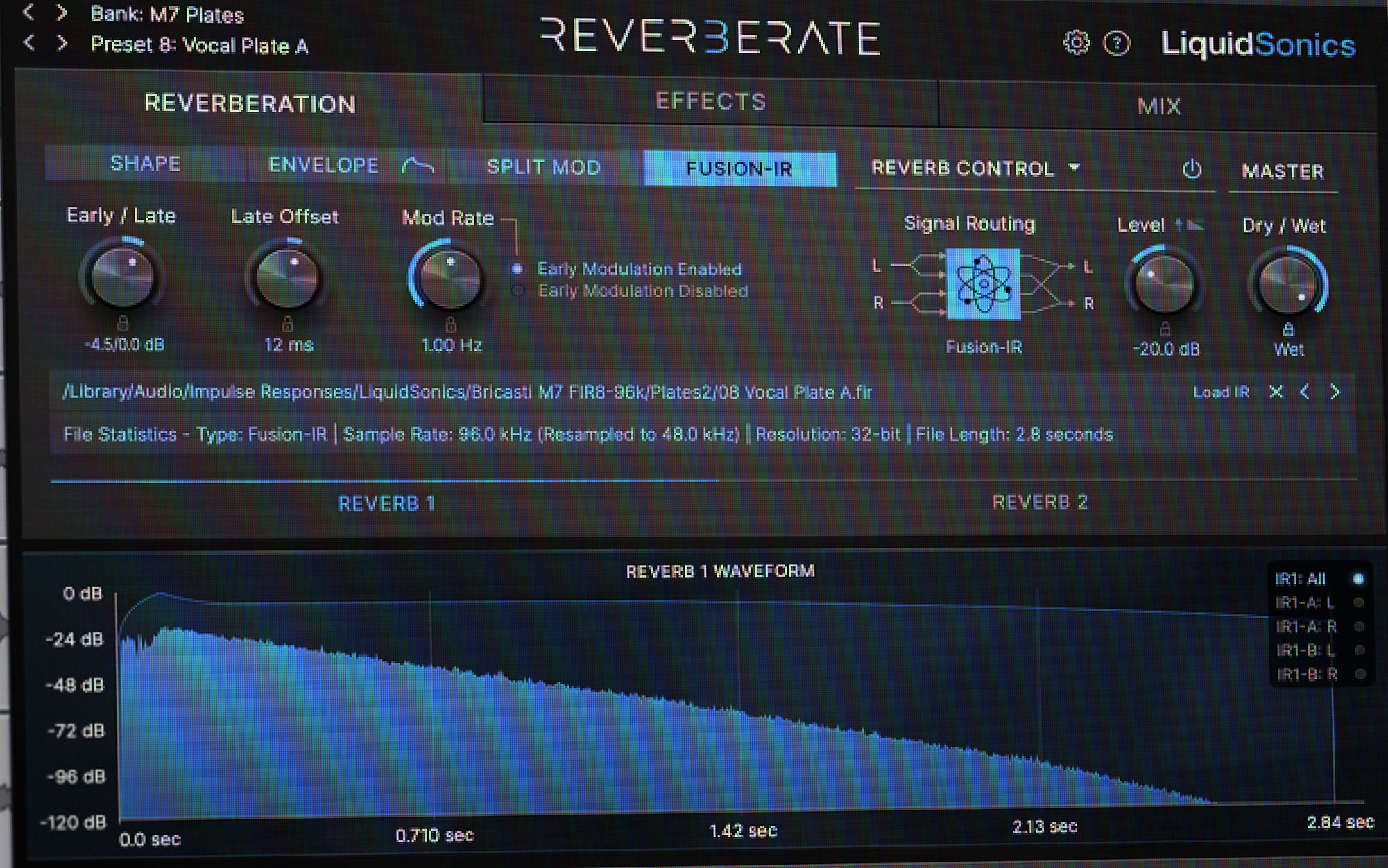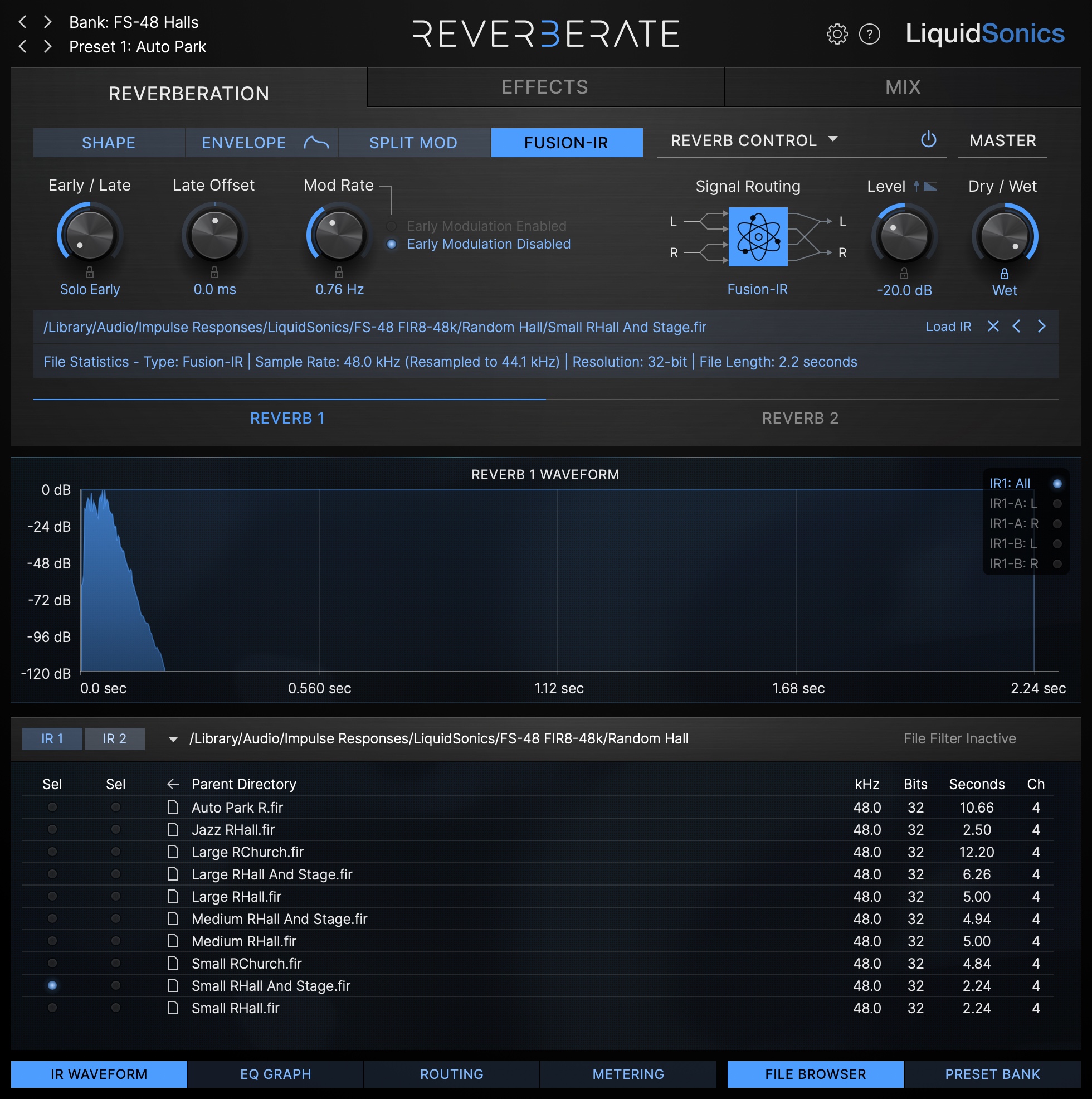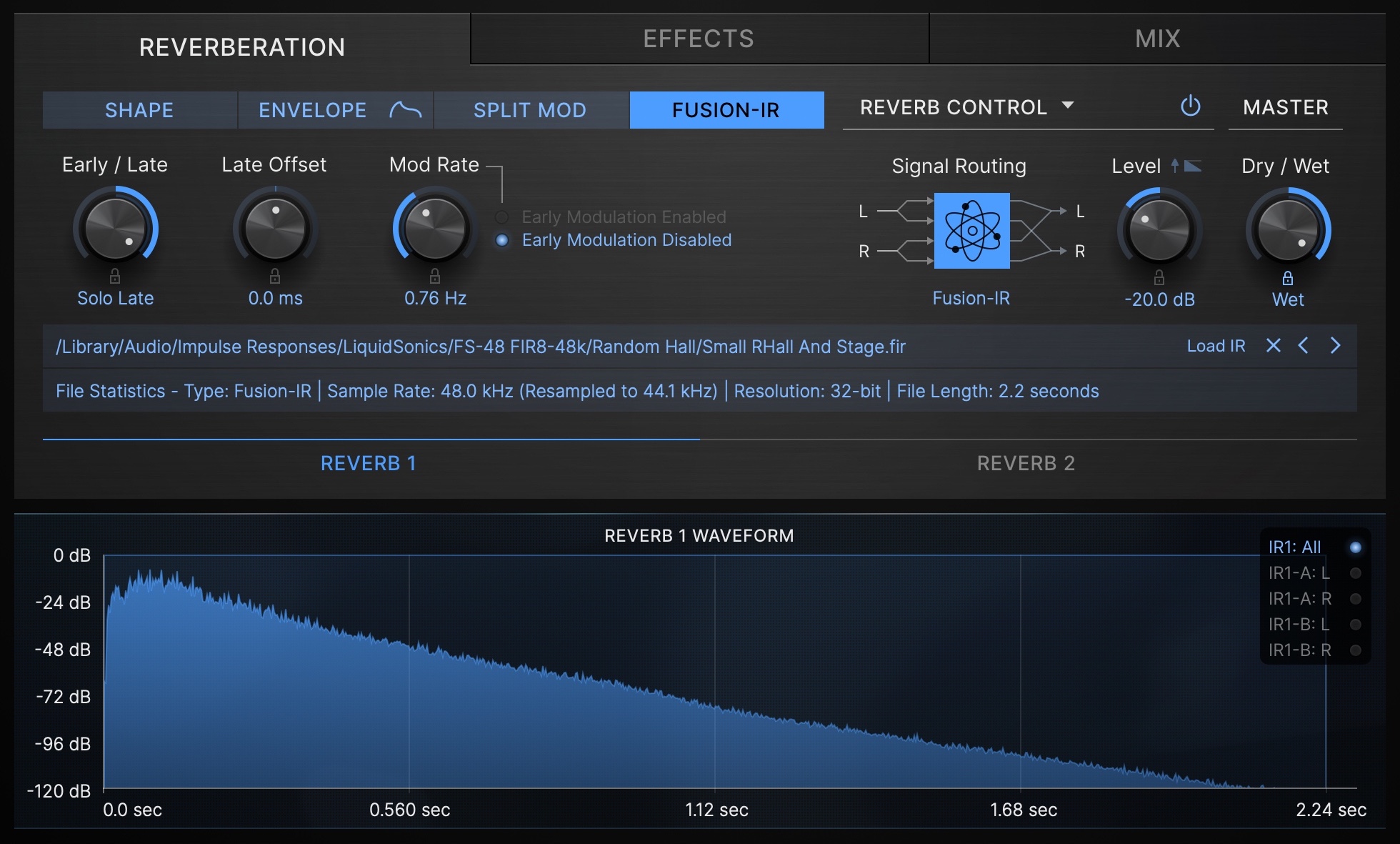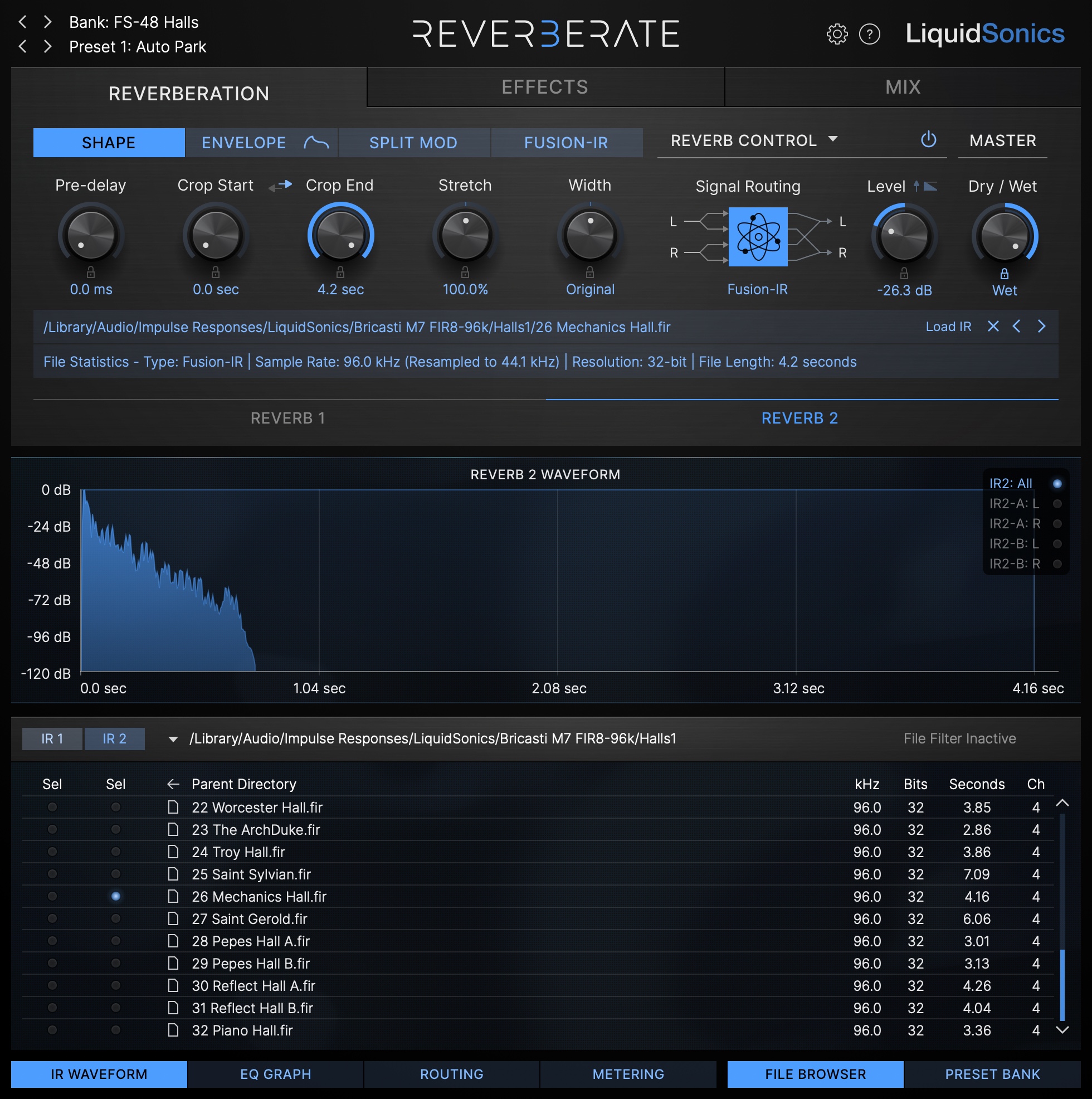
For years I’ve loved many of the classic reverb algorithms – Random Hall, Rich Plate, Concert Hall; the list goes on, but I’m less often blown away by their reflection engines which are usually comprised of simple delays with a static diffuser to soften and spread them out a little. They can sometimes sound a little metallic and often don’t have a great deal of complexity to them. Great reflections that sound clean and pure whilst incorporating an organic modulation are hard to do well, but some modern reverbs now do a great job of them. But can you have your cake and eat it?
As LiquidSonics Fusion-IR captures include early reflections and late reverb components sampled independently you can create some very interesting hybrids reverbs by mixing and matching reflections from one capture with the reverb from another.
With the release of the FS-48 and FS-24x packs there are now more Fusion-IR captures available than ever before including some fantastic captures of many classic reverb algorithms, and in this blog post we will give an example of how you can use them creatively with some of the unique features in Reverberate 3.
Combining the constituent parts of reverbs from different eras is a fun and novel way to get creative with your reverb. Let’s work through an example below.
Select A Reverb Tail
In the image below we have selected a classic FS-48 preset, the Small Random Hall and Stage. The ‘and stage’ typically means a hall with some reflections. To illustrate the reflections they are shown isolated below. Note how they present as a fairly short simple decay; this is the product of a couple of simple point-delays with an in-line diffuser to soften them.
We could probably use something more interesting here, especially as there is no modulation on these reflections.

We discard the reflections by soloing the late component of the reverb. The reverb now resembles some of the captures in this folder that do not have any reflections (for example Small RHall.fir) – so you could easily have just selected one of those.
Using the late offset control we can add or remove pre-delay from the late reverb if needed, or dip into the shape/envelope tabs to edit the decay profile to suits our needs. It is even possible to now apply delays, chorus and filtering to the Reverb 1 container independently of the reflections which we will configure in Reverb 2.

Select New Reflections
Below we pair some M7 reflections with the classic Random Hall late reverb algorithm and arrive at a pleasant mix of the contemporary reverb’s clean early modulated reflections with a more chunky vintage decay. Below we have simply selected the second reverb container for the M7 capture and soloed the reflections.
You can balance the levels either using the Level control in Reverb 1 / Reverb 2, or use the reverb blend control in the mixer tab.

The result is a reverb with a very pure and clean modulated onset that has minimal colouration compared to the original reflection model, with a very rich and characterful tail with heavy modulation.
Perhaps if you’re not looking for something quite as clean as M7, check out the early reflections from the Ambience algorithm in FS-48 and add some time-based split-mod modulation in to the mix as they tend to be quite rich so are suitable for use in a characterful way, and these really benefit from some of the modulation on offer. Or try pairing the reflections from FS-48’s Ambience with FS-24x’s Concert Hall or Rich Plate for a mix of two similar eras of classic vintage reverb design.
Splitting the reverb and reflections apart for individual sampling in the Ambience algorithm was a particular challenge due to the way the hardware works, so I hope some of you enjoy ripping those apart and exploring what can be done with them!
There are a huge array of possibilities available in the various Fusion-IR sample packs just waiting for you to unleash your creativity.
